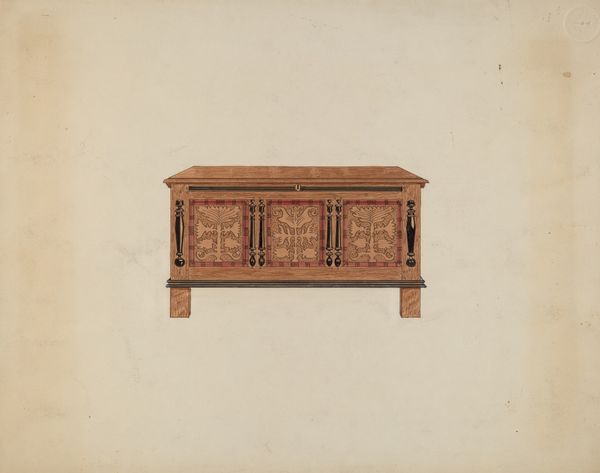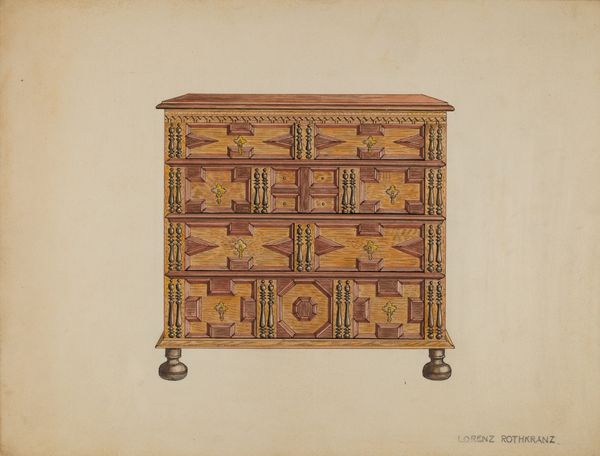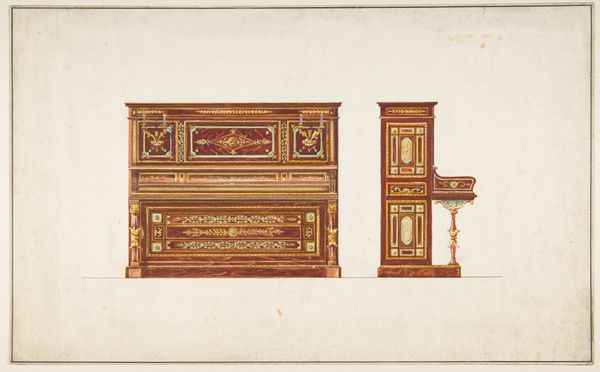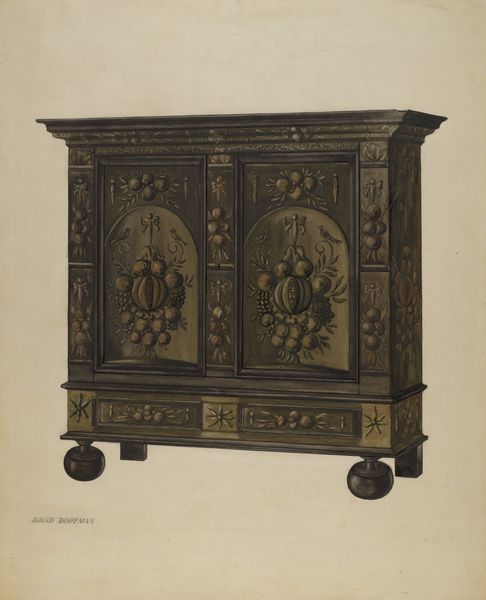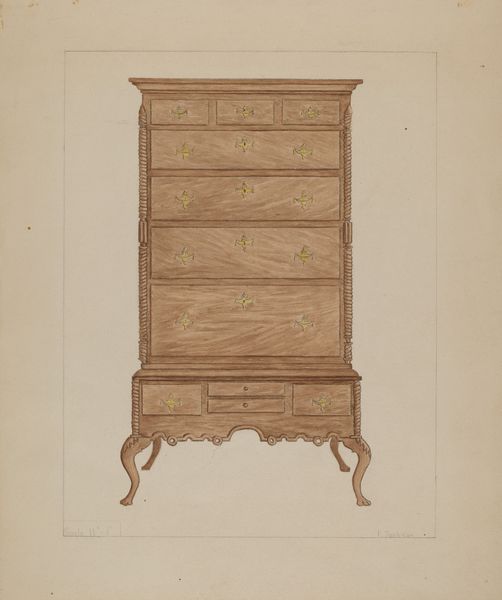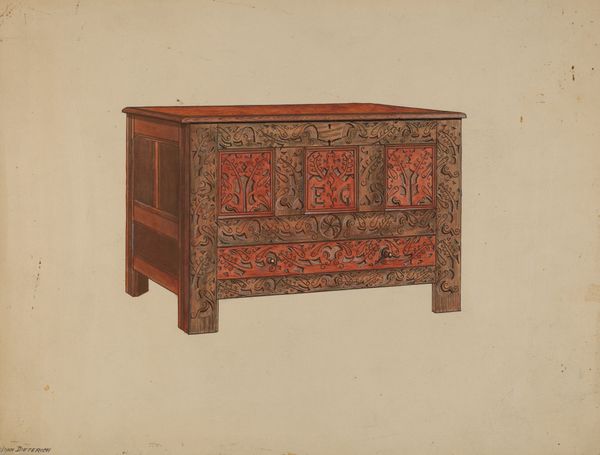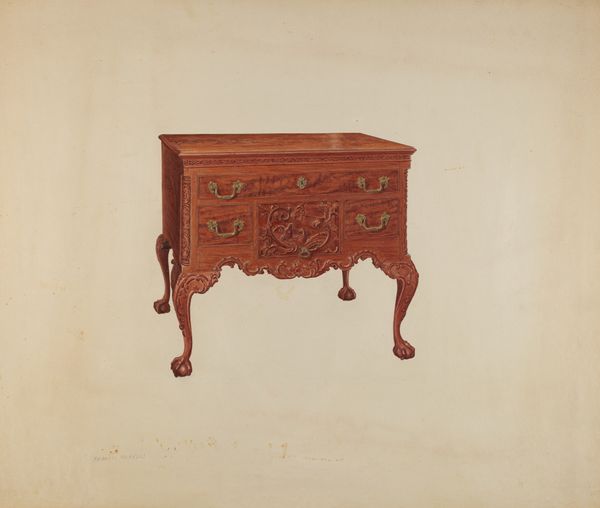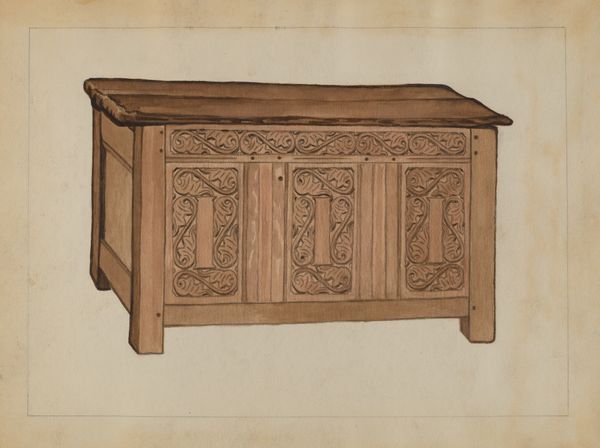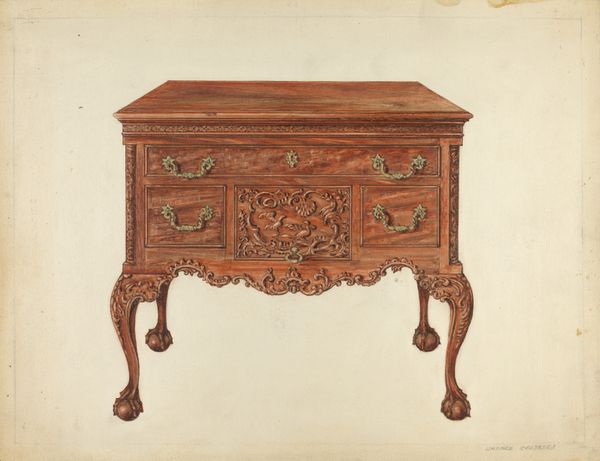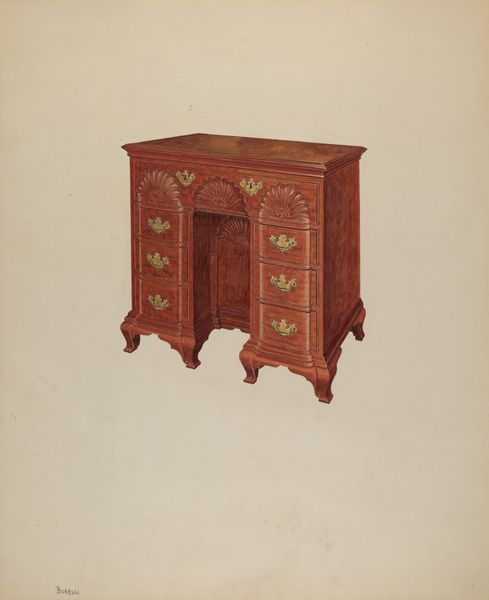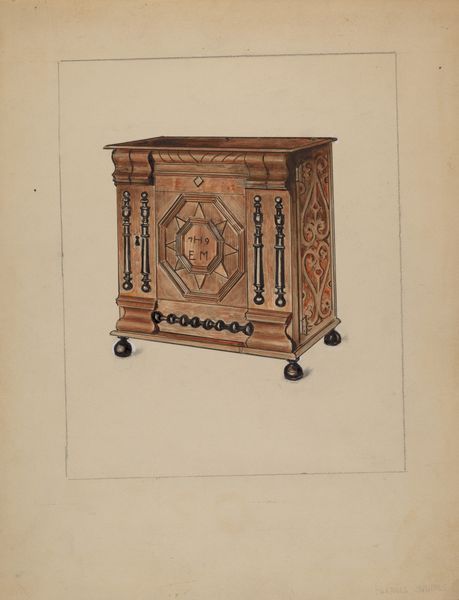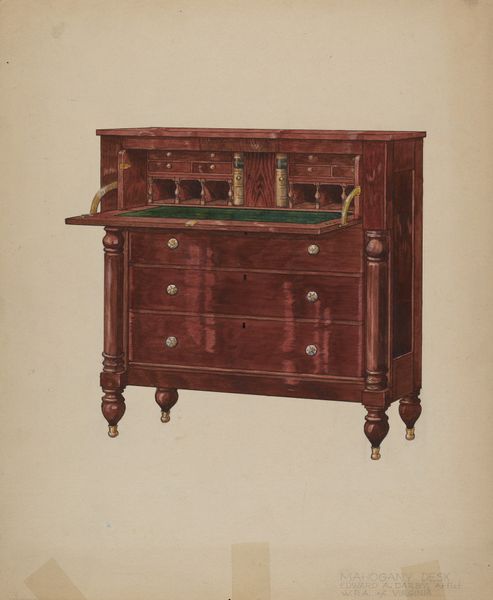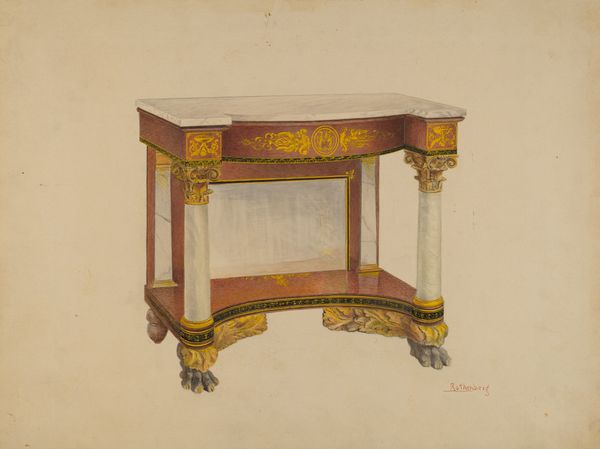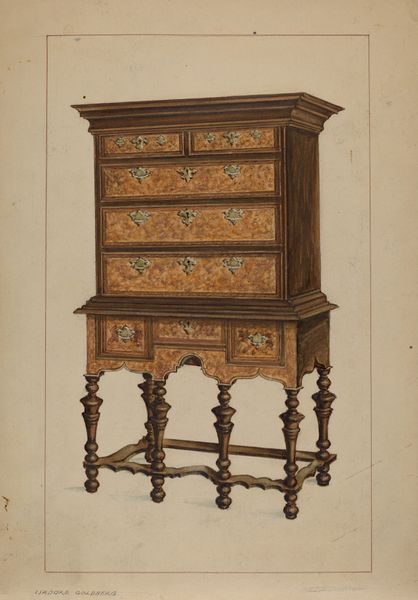
drawing, coloured-pencil
#
drawing
#
coloured-pencil
#
coloured pencil
#
watercolour illustration
#
academic-art
#
decorative-art
Dimensions: overall: 28.9 x 36.5 cm (11 3/8 x 14 3/8 in.) Original IAD Object: 18 7/8"wide x 10 1/4"long
Copyright: National Gallery of Art: CC0 1.0
Curator: The artwork we're observing is a colored-pencil drawing of a "Hartford Chest," dating to around 1936. Editor: It's charming! The details on the wood are meticulous and decorative—a very functional object elevated by its ornamentation. It also feels quite removed from modern artistic preoccupations. Curator: Exactly. Its making is tied to labor, production, and a particular social context. Consider the means of creation—a craftsman dedicating their time and skill. Editor: Let's think about that craft in a broader context. The aesthetic hints at class distinctions: this chest represents aspirations for wealth and elevated social status in that historical moment. Curator: The materials used are very humble, colored pencil and paper; still, they’re mimicking a more luxurious crafted object, blurring those lines between high art and functional design, consumption and class aspirations. The intention isn't necessarily the creation of fine art. Editor: Absolutely, we must explore these objects as part of larger historical narratives that look beyond just formal aesthetics. What identity is evoked here through this representation of material culture? Whose labor went into making the original piece this drawing depicts? The piece offers up some quiet reflection, perhaps concerning consumption and the things people buy to store even more things. Curator: It asks us to re-evaluate the supposed separation of 'high art' and 'craft.' Was the design meant for mass production? It's vital to dissect the labor involved. Editor: By analyzing these historical markers, we can reveal societal aspirations and biases embedded within such crafted works. Even these renderings echo those historical narratives, filtered again through artistic intent. Curator: I find myself curious about its original intended use. Was it meant to illustrate the potential of craft, perhaps advocating the dignity of labor itself? Editor: Examining a drawing like this pushes us beyond objectification into understanding something about society. Curator: Definitely! I hope our visitors can now reflect on craft beyond mere visual appeal, and consider labor's story behind such meticulous objects.
Comments
No comments
Be the first to comment and join the conversation on the ultimate creative platform.
